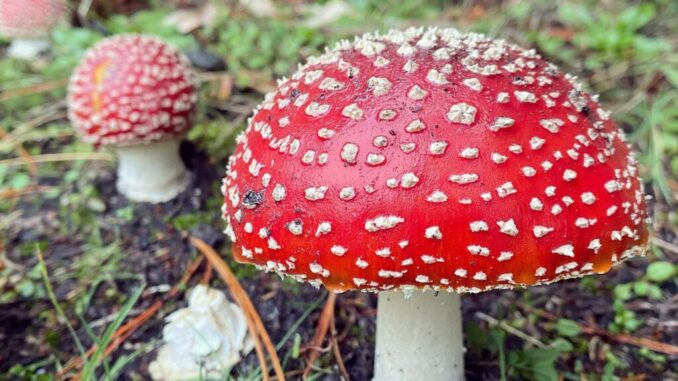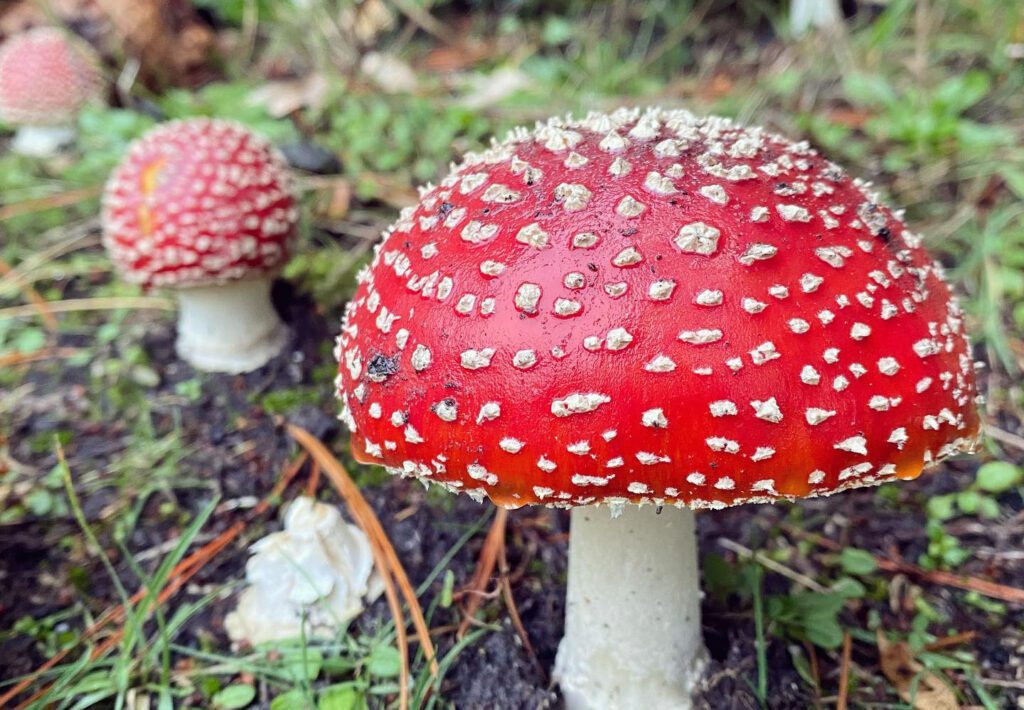
Are you wondering if it is possible to eat the Fly Agaric? What are the effects? Where and when to find it?
You’ve come to the right place! We tell you all about this fungus that fascinates so much!

Is The Fly Agaric Poisonous Or Deadly?
The Fly agaric or Amanita muscaria, is not deadly. However, its consumption can lead to risky behaviors that can lead to death. Indeed, this species is considered hallucinogen.
We do not reference this species on our Mushroom Maps. Because it is not an edible mushroom.
Can You Touch The Fly Agaric?
Of course! You can obviously touch it and manipulate it. That’s no problem!
Indeed, its toxicity will manifest only if you eat it. Only ingestion will poison you.
Can You Eat A Fly Agaric?
The fly agaric is not edible in the proper sense, because it causes side effects (hallucinogenic) and can cause gastrointestinal disorders followed by nervous disorders. Thus, we do not recommend its consumption and we cannot say that it is edible.
In addition, the consumption of this type of product can trigger physical and/or mental illnesses. Indeed, taking this type of drug is never harmless.
But what happens when you eat fly agarics?
Psychedelic Effects Of Fly Agarics
Consuming it causes varying effects from one person to another. However, what is often reported are hilarious hallucinations, involuntary movements, delirium, vomiting & nausea… This hallucinatory phase is very often followed by depressing thoughts and significant fatigue.
This alters consciousness and can trigger latent mental problems that would not have triggered without taking this hallucinogenic product.
Where And When Does The Fly Agaric Grow?
This mushroom is an excellent indicator for finding porcini mushrooms (King boletes)! Indeed, it is very common to come across this one near King bolete. Thus, it shares the same type of habitat: acid soil, a wide variety of trees (coniferous and deciduous) and a good amplitude on the elevation (from the plain to the middle mountains).
In addition, you can often find it in areas of wet pasture with animal droppings.
Finally, its growth period is from the end of August to the end of October. That’s when you’ll have the best chance of meeting this one!
How About Picking Edible Mushrooms With Our Maps?
The fly agaric is a beautiful mushroom, but why not also take an interest in edible mushrooms (Porcini, Chanterelles, Morels…). Explore the best spots for these mushrooms with our Mushroom Maps!
Leave a Reply